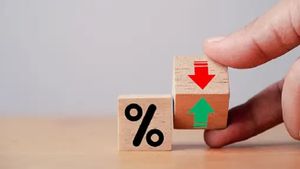YOGYAKARTA - Oil and gas prices (oil and gas) since 2020 have increased significantly.
The price for one gallon of regular gas is USD 2.58 on January 6, 2020.
The price fell 31 percent to $1.77 at the end of April 2020 and then rose 24 percent to $2.20 per gallon on July 13, 2020, where the price remained stable for the rest. this year.
Until 2021, prices continued to rise, up 46 percent until the end of the year at 3.28 US dollars.
In March 2022, gas prices had risen above $4.10, the highest since July 2008.
Then what causes fuel prices to fluctuate in the world?
The combination of factors, including a response to the coronavirus pandemic aka COVID 19, created this extreme volatility.
Gas prices and the underlying oil prices are determined by three factors: supply and demand, commodity traders, and the value of the dollar.
Offers and requests
Like most of the items you buy, supply and demand affect gas and oil prices. When demand is greater than supply, prices go up, and vice versa. For example, the exploration of new US crude oil reserves increased oil supply in 2014, and gas prices fell, but the explosion turned around as low prices put many manufacturers out of business.
Seasonal demand also affects oil and gas prices. Usually, gas prices rise every spring. Gas demand increases in the summer as families go on vacation. Regulations also require a shift to summer class gasoline, which is more expensive to produce.
Commodity Traders
Commodity traders, such as gasoline, wheat, and gold, also caused high gas prices. They buy oil and gasoline in the futures commodity market.
The market allows the company to purchase gasoline contracts for future shipments at agreed prices.
But most traders have no intention of taking ownership. Instead, they plan to sell the contract for profit.
Both gas and oil prices are influenced by the ups and downs of these futures contracts. Prices depend on what buyers think about gas or oil prices in the future.
In this way, commodity traders make predictions that are fulfilled by themselves, leading to the asset bubble. Unfortunately, the person who paid for this bubble is you, at the gas station.
Dollar Value
Gas and oil prices also rose when the value of the US dollar declined. Oil prices rose between 2002 and 2008 as the dollar was significantly depreciated during that time.
Oil prices fell between the end of 2014 and 2016, in part for this reason. The strong dollar allows members of the Organization of the Petroleum Exporting Countries (OPEC) to make more money while keeping supplies constant.
What is the Impact of Gas Prices and Ups and Downs Oil?
High gas and oil prices were created, mostly, by high crude prices.
Oil costs reach 43 percent of the price of regular gasoline. The remaining 57 percent come from distribution and marketing, purification, and taxes. This input does not change as often as oil prices.
When oil prices rise, you can also expect to see gas prices eventually rise at the pump. The increase of 10 US dollars in oil prices (per barrel) translates to 0.25 US dollars for gas price increases (per gallon) in the long term.
So after knowing the cause of fuel prices going up and down, watch other interesting news on VOI, it's time to revolutionize news!
The English, Chinese, Japanese, Arabic, and French versions are automatically generated by the AI. So there may still be inaccuracies in translating, please always see Indonesian as our main language. (system supported by DigitalSiber.id)













